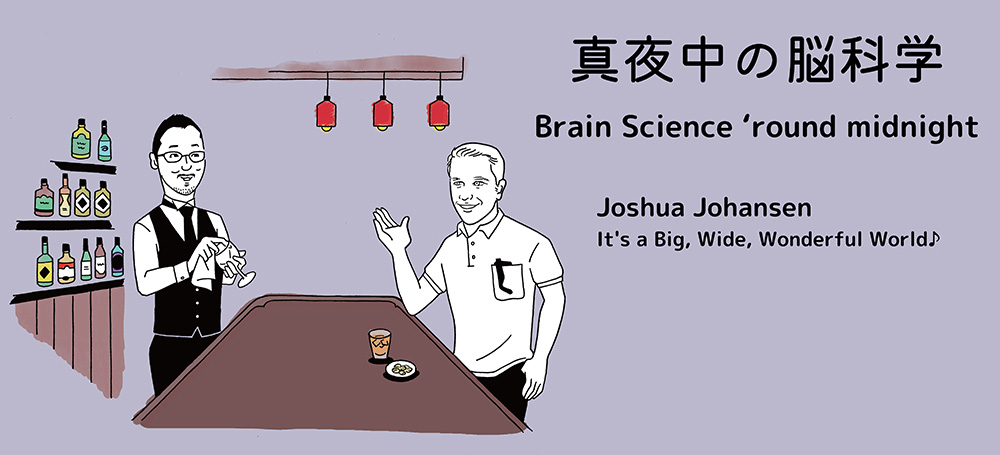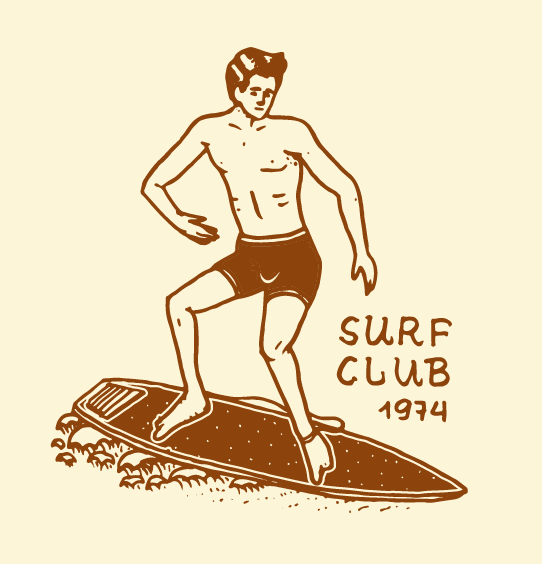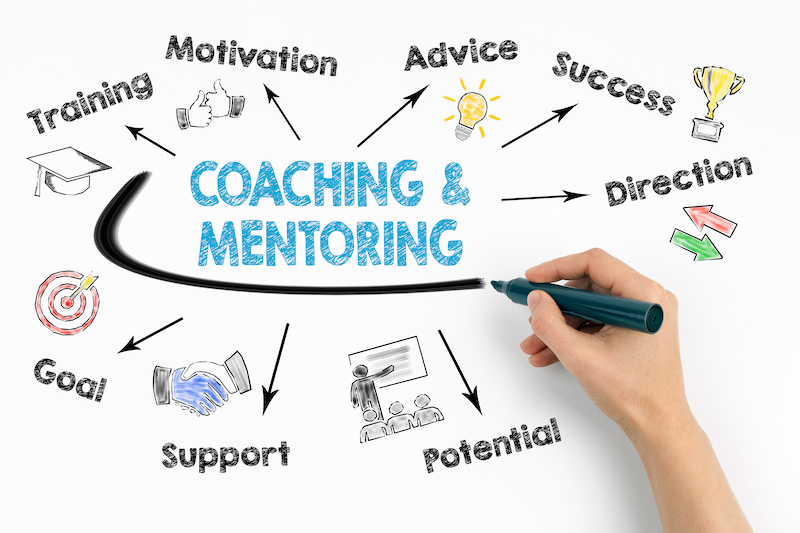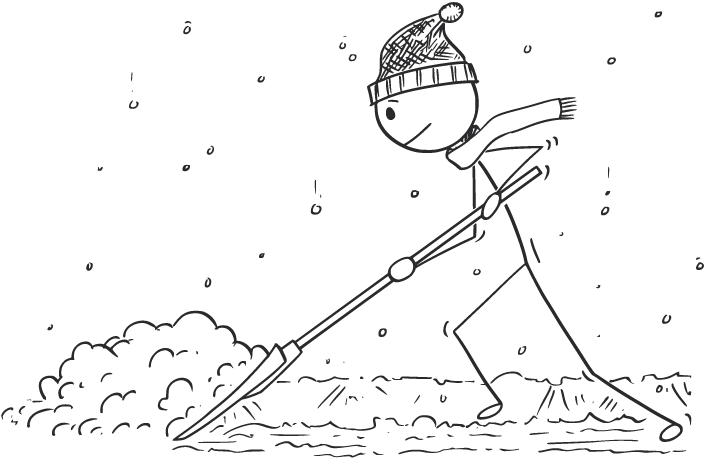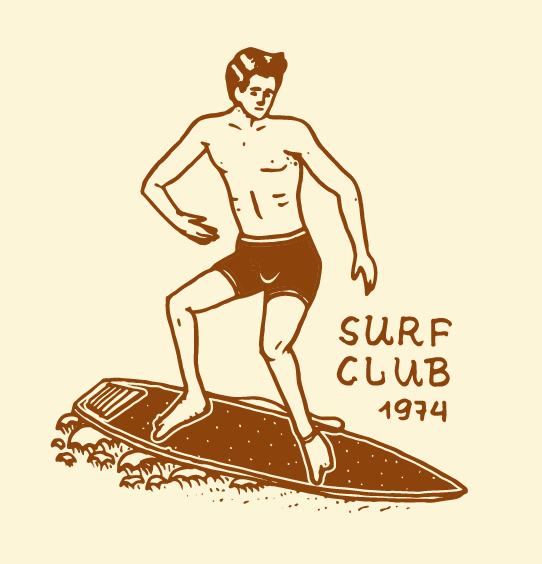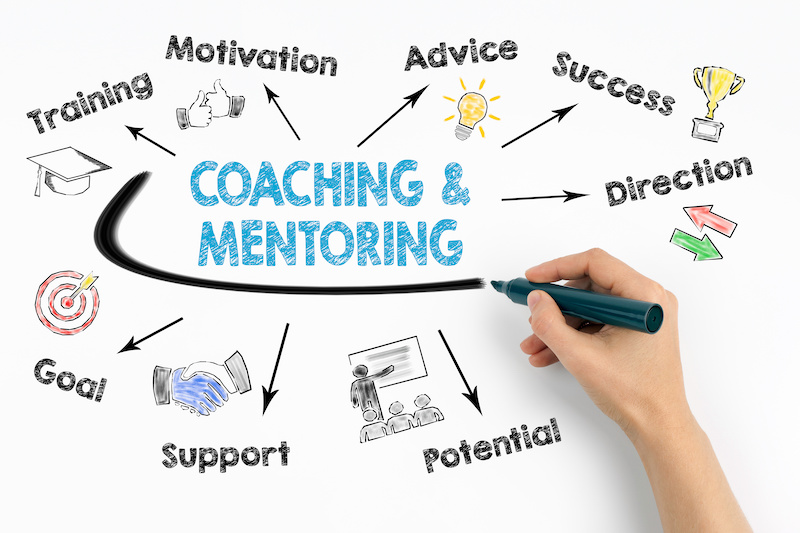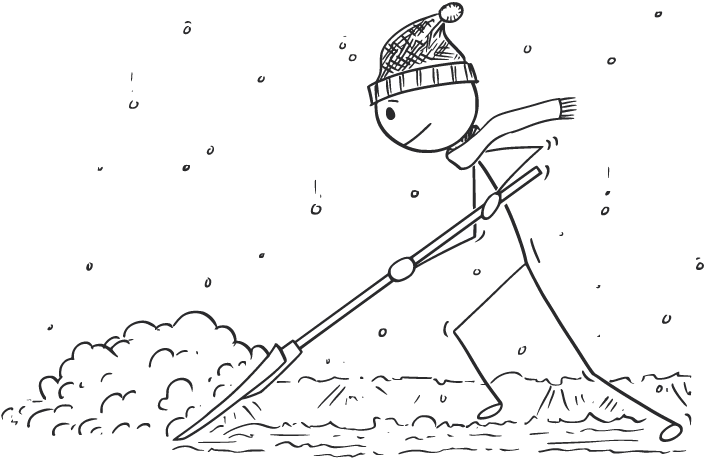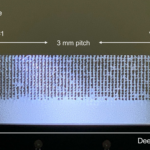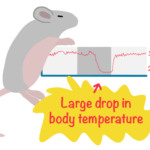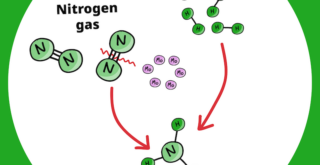Now for another installment of “Brain science ’round midnight”, brought to you by the RIKEN Center for Brain Science (CBS). Once again, please imagine that the interviews are not interviews at all, but rather just conversations in a Tokyo bar with smooth jazz music playing in the background. The conversations are with Kaoru Takeuchi, an ex-physicist turned science writer who, you can also imagine, owns and tends bar with his cat Pickles. Below, you can read the latest conversation with Joshua Johansen, team leader of the Laboratory for Neural Circuitry of Learning and Memory. So sit back, relax, turn on some smooth jazz, and read on.
A researcher finds his path by taking a detour
Takeuchi: Joshua, you are from Los Angeles, California, USA. We heard that the education you received there was a little different from the usual system.
Johansen: Yes, I went to a different type of school system, called Waldorf education from kindergarten to 8th grade, while living first in Los Angeles and then in Santa Cruz, a small town on the coast in northern California. Actually, both of my parents were Waldorf teachers. In the early grades, it’s not very academically focused and you learn through storytelling and reading. For example, you learn about numbers and math through stories and are immersed in the mythologies of ancient cultures. Something that’s very different from traditional education is that here are no formal textbooks. You learn from the classroom and then you create your own textbook by making drawings and writing about what you learned that day. There is more of an artistic, creative, and experiential focus to this type of education.
Takeuchi: If you do not use a textbook, are you less likely to learn new words or memorize math formulas?Johansen: Although textbooks were not used in elementary school, we did a lot of reading throughout and there were textbooks and formal math education available in junior high and high school.
Takeuchi: I see. It seems that experience and skill on the part of the teacher are key, but it is a system that allows children to learn and grow while nurturing their creativity.
Johansen: I was in Waldorf School through junior high, but the Waldorf School that I was in only went to eighth grade. So I transferred to a public school for 2 years in Santa Cruz. (laughing) During that time, I was doing a lot more surfing and enjoying my life than I was going to school.
Takeuchi: Surfing! That must have been a wonderful period in your life!
Johansen: Those were good times, though my education suffered a bit!
Takeuchi: I get the impression that you had a wonderful school life while doing mischievous things as a young person. I believe that the educational system that emphasized originality and thinking for oneself may be the reason why you are creative as a researcher today.
Johansen: I believe so. However, there are two sides to this. Of course, the creativity I developed is important for science, and I consider it my strength. However, up through high school I was not as academically focused and it took me some time to find my path to academia and research.
Takeuchi: So when did you decide to become a scientist or researcher?
Johansen: It was a long road. At first I wasn’t sure I wanted to go to college but ultimately decided to enroll in a small university in northern California that was strong in business. I was always interested in literature and the humanities and there were classes in psychology and philosophy that I enjoyed. Also, I had some good teachers and I gradually became interested in academic pursuits. Important mentors at this time convinced me that this school wasn’t the best place for me and encouraged me to transfer.
Takeuchi: The adults around you noticed your aptitude for academics and guided you.
Johansen: That is really true. Without such advice, I would not be living in Japan as a researcher today. Throughout my career, mentors have been invaluable to me. After leaving the previous school, I took time off before transferring. I wanted to travel, learn about how people from different backgrounds and cultures experienced life, and see the world with my own eyes. During that period, I moved to Colorado and spent three years working, saving money, and traveling.
Takeuchi: In Japan, we have recently seen an increase in the number of students who take such sabbatical periods to do volunteer work and see the world. I think it is very good for students to gain a variety of experiences in addition to their university studies when they are young.
Johansen: Those three years were very important in my development. Despite not being in school, I became even more interested in intellectual pursuits and I read constantly. It was a great time for me to read, travel, and think about what I wanted to do with my life. After graduating from high school I had to become financially independent, so financial realities were also an important consideration. For work, I had a variety of jobs, coaching high school baseball, mowing lawns, shoveling snow, delivering newspapers, and working at a grocery store. In addition to the traveling, working at these jobs with people from many different socioeconomic backgrounds gave me new perspectives and insights. I came to realize that while I valued an intellectual life, I wanted to combine that with working with people to help them improve their lives.
Takeuchi: If you only study at a university, it may be difficult to have opportunities to look at social issues with real-world experience. In a sense, it must have been a time when you slowed down, got deeply involved in the local community, and traveled to see and feel things you had never known before, thereby expanding your world and revealing what you really wanted to do.
Johansen: I think you are right. That 3-year experience helped me decide to major in clinical psychology when I returned to college. I transferred to the University of Colorado at Boulder, which has an excellent clinical psychology program, and I took my studies seriously. I also volunteered in a clinical psychology laboratory that studied bipolar disorder and did research on the effects of family therapy on this disease. I was particularly fascinated by a class taught by Professor Linda Watkins on sensory systems. Both the class and Professor Watkins were inspiring. Until then, I was more focused on clinical psychology and not as interested in the hard sciences of biology, physics, and chemistry. Although I was training in clinical psychology, I had avoided confronting the biological and neuro-scientific aspects of human behavior. Through Linda’s classes, I became interested in these fields, and I began to think that the clinical psychology I was studying was insufficient to deeply comprehend human behavior, thought, and action. I felt that it was in biology that I could find true answers and ultimately help people.
Takeuchi: Your intellectual curiosity and speed of academic exploration were increasing.
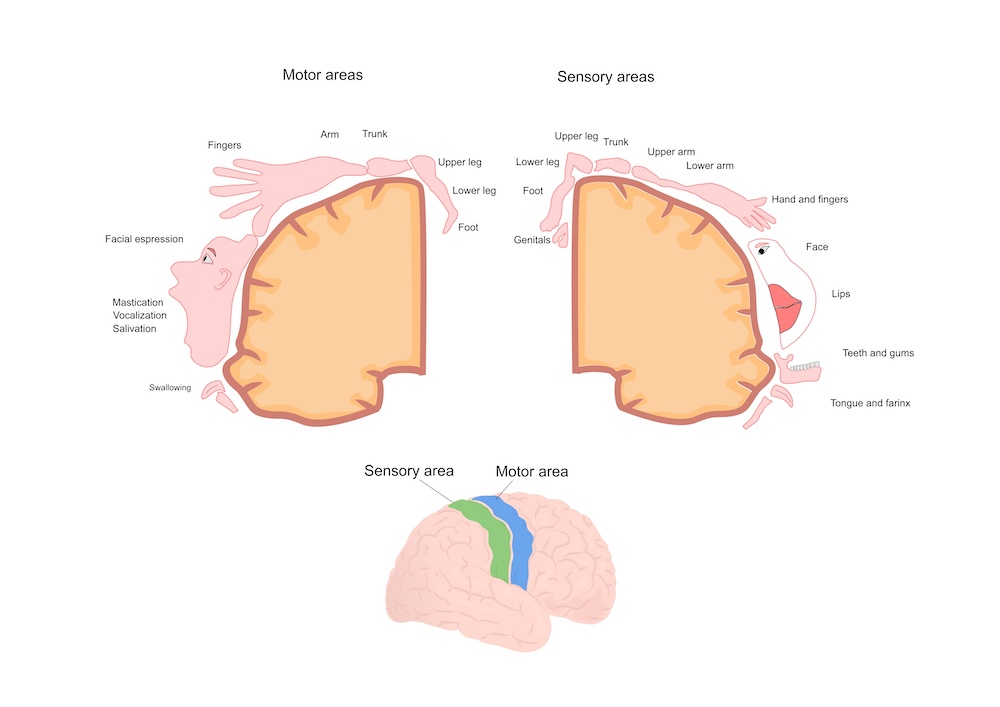
The sensation of touch is mapped onto the somatosensory cortex of the brain. More brain area is used for parts of the body that require fine sensation, like fingers and lips.
Johansen: Yes, it was an exciting time. I was able to entertain many different ideas and gain real world experience in different types of academic environments. While I was working in the bipolar disorder lab, I also started working in Linda’s lab, which really got me hooked on neuroscience. I began to think, “I want to work with patients, but not as a clinical psychologist”. I decided that medical school might be a good option, but I had not earned enough credits in natural science courses such as chemistry and physics, which were required for medical school entrance. I decided to graduate first and then work in a neuroscience lab while studying those subjects properly. So Linda introduced me to Professor Howard Fields at the University of California, San Francisco (UCSF), and I moved to San Francisco to work as a lab manager in his lab.
Brain research fascinated me as I worked and learned
Takeuchi: When you say “laboratory manager,” you mean that your job was to support the smooth running of research by, for example, purchasing the chemicals and equipment necessary for experiments, right?
Johansen: Yes, that was part of the job, but I was ambitious and Howard was an encouraging boss so I ended up learning many laboratory techniques and conducting my own studies. For about five years, while working as a lab manager, I took all the courses required for medical school. It was an exhilarating time and I learned a great deal about neuroscience, both in the lab and in the classroom. Looking back now, it was a period of time that paved the way for my ultimate career path.
Takeuchi: That would have been a busy but very intense time to work and learn. What kind of research was going on in Professor Howard Fields’ lab?
Johansen: His lab was studying “pain,” specifically how pain prediction works on the actual pain circuits in the brain.
Takeuchi: I think I understand, but I’m not sure. What are you referring to specifically?
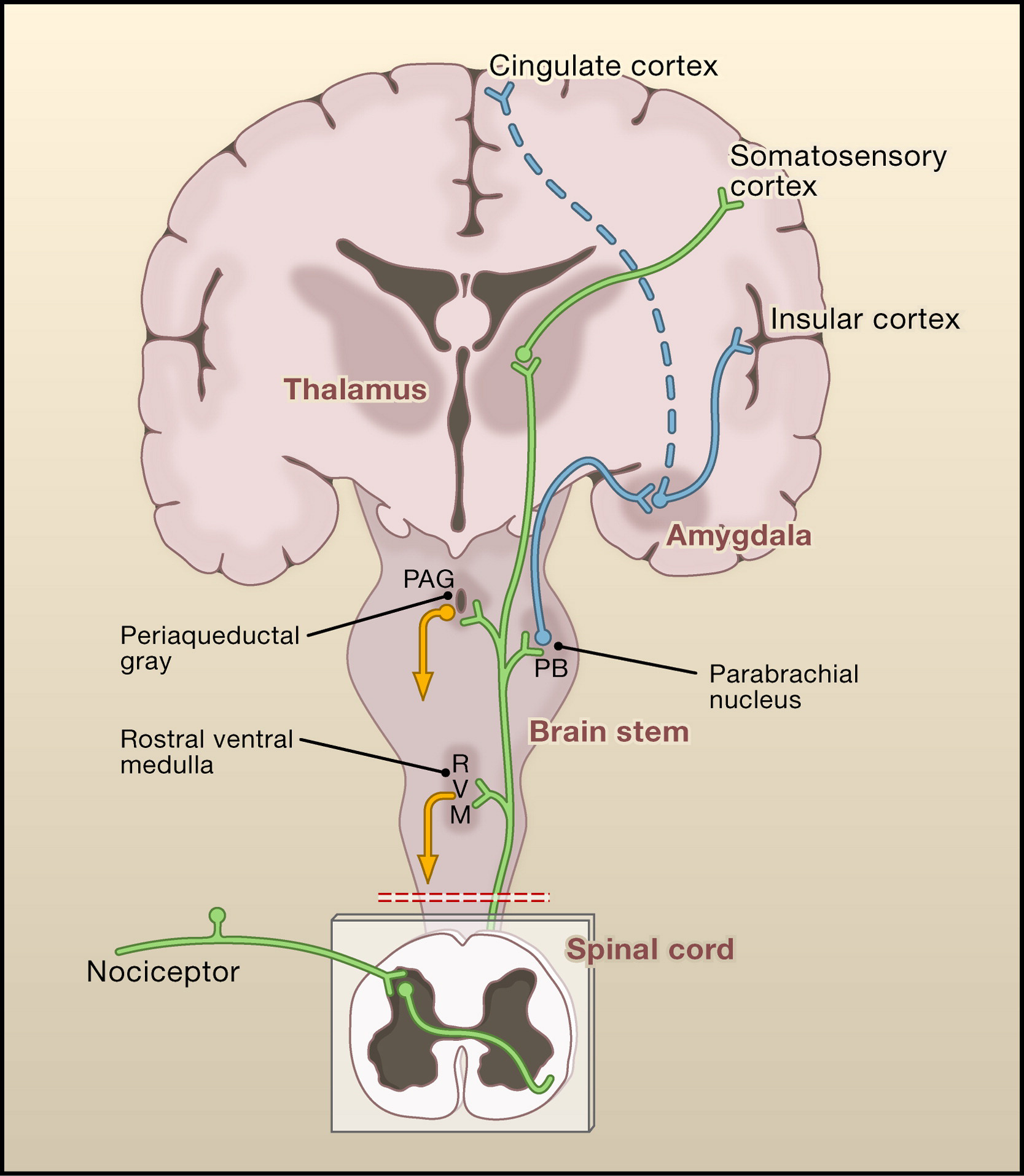
The pain processing pathway. pain perception relies on ascending neural pathways from the spinal cord to the brain, and descending pathways from the brain to the spinal cord. Pain perception can be modulated naturally and with drugs by activating different parts of the circuits. In the interview, Dr Johansen is referring to the descending pathway in the brain stem medulla (RVM), represented here by an orange arrow. In that part of the brain stem there are “on” cells and “off” cells. In natural stress-induced analgesia, opioids activate the “off” cells and suppress the “on” cells, which reduced pain sensation. Image: Pharmacology Res & Perspec, Volume: 9, Issue: 3, First published: 06 June 2021, DOI: (10.1002/prp2.789)
Johansen: Let us say you are on the battlefield, in a dangerous situation where you are getting shot at by the enemy, and you are experiencing stress like you have never experienced it before. Unfortunately, you are hit by a bullet, but in that moment you don’t feel any pain. However, when you leave the battlefield, you begin to feel extreme and intense discomfort. This phenomenon has been reported repeatedly by soldiers in combat or even by car accident victims. This also occurs when we anticipate that something bad is going to happen. This type of analgesia is due to a specific mechanism in the brain that is engaged during conditions of stress, fear, and trauma and reduces pain processing to help us survive. The same endogenous analgesia system is engaged when we take pain killing drugs like morphine. Howard’s lab discovered this analgesia circuit in the brain and his lab was generally focused on researching pain mechanisms.
Takeuchi: So the brain is not only passively processing input from the outside, but it’s also anticipating pain and altering the amount of incoming “pain information”? But how do you actually study that? You must need to examine it as a physiological phenomenon in the brain, not just research based on reports.
Johansen: We used rodents to study the specific neural circuit which does this. It’s in the brainstem and sends projections to the spinal cord to inhibit incoming pain information. We would insert thin electrodes into the brainstem and record the electrical signals from cells there while a mild noxious stimulus was applied to the tail of rats. There were different types of cells there, some called On-cells that were excited by noxious stimuli and others called Off-cells that were inhibited.
Takeuchi: I see. How does that connect to pain sensitivity?
Johansen: Pain sensitivity can be measured by observing On-/Off-cell responses to pain. For example, if rats are given an analgesic drug like morphine, the activity of Off-cells increases and On-cell activity decreases, and animals respond less to painful stimuli. This system is what is recruited during stress and fear. When I first observed this phenomenon, I thought it was truly amazing. The experimental process was a bit like fishing, we would insert our electrodes and the electrical activity of cells was converted to sound. So we could hear cells as we got closer to them and then try to catch them. So I could hear the sound of these cells and see how their activity was reflected in the behavior of the rat. I was fascinated by seeing, in real time, how the dynamic activity of the nervous system controls animal behavior.
Takeuchi: For researchers in life-science fields, not limited to brain science, the experience of actually seeing the microscopic events that form life, which are usually invisible to the naked eye, through experiments must evoke a great deal of emotion. Many scientists tell us how beautiful and majestic this experience is.
The turning point was the study of pain
Johansen: In my case, I was impressed by the way things that could not be explained by psychological theories alone, were revealed in the biology of the nervous system right before my eyes, and ears. At that time, Howard’s lab was evolving from pain research and moving into the study of addiction and motivated behavior. He became the director of the Pain and Addiction Research Center at UCSF, where he assembled a large group of world renowned researchers, including David Julius, who later won the Nobel Prize in Biology and Medicine (awarded in 2021), Roger Nicoll, who did seminal work on synaptic mechanisms of learning and memory and Allison Doupe, a leading research on songbird learning and human speech. So you had all of these fantastic scientists from disparate research areas gathered together to try to understand a new field that they did not work in. There were weekly meetings where everyone read and discussed papers and tried to identify key issues and problems in the field and ascertain the most important, unanswered questions. For a young person like myself, it was incredibly exciting!

Like human language, zebra finch song is learned during a critical period when male birds are young. The brain circuitry for this behavior has been studied as a model for how people learn and produce language.
Takeuchi: So you were among the neuroscience superstars of this day!
Johansen: I was really lucky. I learned a lot, especially about how to assimilate existing knowledge to identify what we know, and then figure out what the most important new questions are; how to chart a new path essentially. While working as a lab manager in Howard’s lab, I followed this process to think about what unanswered questions remained in pain research.
Takeuchi: What was the specific unresolved issue/question you were working on?
Johansen: I felt that the underlying intellectual framework that guided the field needed to be reframed before real headway into understanding its higher order brain mechanisms could be made. The key guiding question remainedーand I think this is still an unsolved problemーwhat is pain for? Researchers at the time focused on pain as a “sense” like touch. How is the localization and intensity of pain perceived, and how are different types of pain transmitted, such as thermal pain or mechanical pain? There was little progress on how pain changes the behavior of living organisms. The reason we have pain is so that we can escape from what’s causing it at the moment and learn not to put ourselves in situations which cause pain in the future. I decided to study this this question. This resulted in a number of impactful publications from Howard’s lab and has served as the basis for much of what I am doing today.
Takeuchi: Gradually, your interest shifted from medicine to basic research.
Johansen: I was going to start preparing for the medical school entrance exam just as I was advancing my research on pain, but by that time I had developed a strong interest in neuroscience research. After a considerable detour, I decided it was finally time to figure out which path I wanted to take and what I wanted to do with my life.
Takeuchi: Wow, a turning point. What path did you choose?
Johansen: (Laughing) Yes, as you may be able to tell from this conversation, my interests shifted. I decided to go into neuroscience. I entered a PhD program at the University of California, Los Angeles in 2003 and, at the age of 34, I received my Ph.D. in the lab of Dr. Tad Blair, studying how unpleasant experiences trigger fear memories. I then moved to a postdoc position at New York University working with Dr. Joseph LeDoux examining brain mechanisms of emotional learning and memory. After four years of post-doctoral work at NYU, I moved to Japan to start my own lab at RIKEN.
You made it to the end of part 1!!! stay tuned for part 2, coming soon … ? ? (You can read the conversation in Japanese here)
A researcher finds his path by taking a detour
Takeuchi: Joshua, you are from Los Angeles, California, USA. We heard that the education you received there was a little different from the usual system.
Johansen: Yes, I went to a different type of school system, called Waldorf education from kindergarten to 8th grade, while living first in Los Angeles and then in Santa Cruz, a small town on the coast in northern California. Actually, both of my parents were Waldorf teachers. In the early grades, it’s not very academically focused and you learn through storytelling and reading. For example, you learn about numbers and math through stories and are immersed in the mythologies of ancient cultures. Something that’s very different from traditional education is that here are no formal textbooks. You learn from the classroom and then you create your own textbook by making drawings and writing about what you learned that day. There is more of an artistic, creative, and experiential focus to this type of education.
Takeuchi: If you do not use a textbook, are you less likely to learn new words or memorize math formulas?Johansen: Although textbooks were not used in elementary school, we did a lot of reading throughout and there were textbooks and formal math education available in junior high and high school.
Takeuchi: I see. It seems that experience and skill on the part of the teacher are key, but it is a system that allows children to learn and grow while nurturing their creativity.
Johansen: I was in Waldorf School through junior high, but the Waldorf School that I was in only went to eighth grade. So I transferred to a public school for 2 years in Santa Cruz. (laughing) During that time, I was doing a lot more surfing and enjoying my life than I was going to school.
Takeuchi: Surfing! That must have been a wonderful period in your life!
Johansen: Those were good times, though my education suffered a bit!
Takeuchi: I get the impression that you had a wonderful school life while doing mischievous things as a young person. I believe that the educational system that emphasized originality and thinking for oneself may be the reason why you are creative as a researcher today.
Johansen: I believe so. However, there are two sides to this. Of course, the creativity I developed is important for science, and I consider it my strength. However, up through high school I was not as academically focused and it took me some time to find my path to academia and research.
Takeuchi: So when did you decide to become a scientist or researcher?
Johansen: It was a long road. At first I wasn’t sure I wanted to go to college but ultimately decided to enroll in a small university in northern California that was strong in business. I was always interested in literature and the humanities and there were classes in psychology and philosophy that I enjoyed. Also, I had some good teachers and I gradually became interested in academic pursuits. Important mentors at this time convinced me that this school wasn’t the best place for me and encouraged me to transfer.
Takeuchi: The adults around you noticed your aptitude for academics and guided you.
Johansen: That is really true. Without such advice, I would not be living in Japan as a researcher today. Throughout my career, mentors have been invaluable to me. After leaving the previous school, I took time off before transferring. I wanted to travel, learn about how people from different backgrounds and cultures experienced life, and see the world with my own eyes. During that period, I moved to Colorado and spent three years working, saving money, and traveling.
Takeuchi: In Japan, we have recently seen an increase in the number of students who take such sabbatical periods to do volunteer work and see the world. I think it is very good for students to gain a variety of experiences in addition to their university studies when they are young.
Johansen: Those three years were very important in my development. Despite not being in school, I became even more interested in intellectual pursuits and I read constantly. It was a great time for me to read, travel, and think about what I wanted to do with my life. After graduating from high school I had to become financially independent, so financial realities were also an important consideration. For work, I had a variety of jobs, coaching high school baseball, mowing lawns, shoveling snow, delivering newspapers, and working at a grocery store. In addition to the traveling, working at these jobs with people from many different socioeconomic backgrounds gave me new perspectives and insights. I came to realize that while I valued an intellectual life, I wanted to combine that with working with people to help them improve their lives.
Takeuchi: If you only study at a university, it may be difficult to have opportunities to look at social issues with real-world experience. In a sense, it must have been a time when you slowed down, got deeply involved in the local community, and traveled to see and feel things you had never known before, thereby expanding your world and revealing what you really wanted to do.
Johansen: I think you are right. That 3-year experience helped me decide to major in clinical psychology when I returned to college. I transferred to the University of Colorado at Boulder, which has an excellent clinical psychology program, and I took my studies seriously. I also volunteered in a clinical psychology laboratory that studied bipolar disorder and did research on the effects of family therapy on this disease. I was particularly fascinated by a class taught by Professor Linda Watkins on sensory systems. Both the class and Professor Watkins were inspiring. Until then, I was more focused on clinical psychology and not as interested in the hard sciences of biology, physics, and chemistry. Although I was training in clinical psychology, I had avoided confronting the biological and neuro-scientific aspects of human behavior. Through Linda’s classes, I became interested in these fields, and I began to think that the clinical psychology I was studying was insufficient to deeply comprehend human behavior, thought, and action. I felt that it was in biology that I could find true answers and ultimately help people.
Takeuchi: Your intellectual curiosity and speed of academic exploration were increasing.
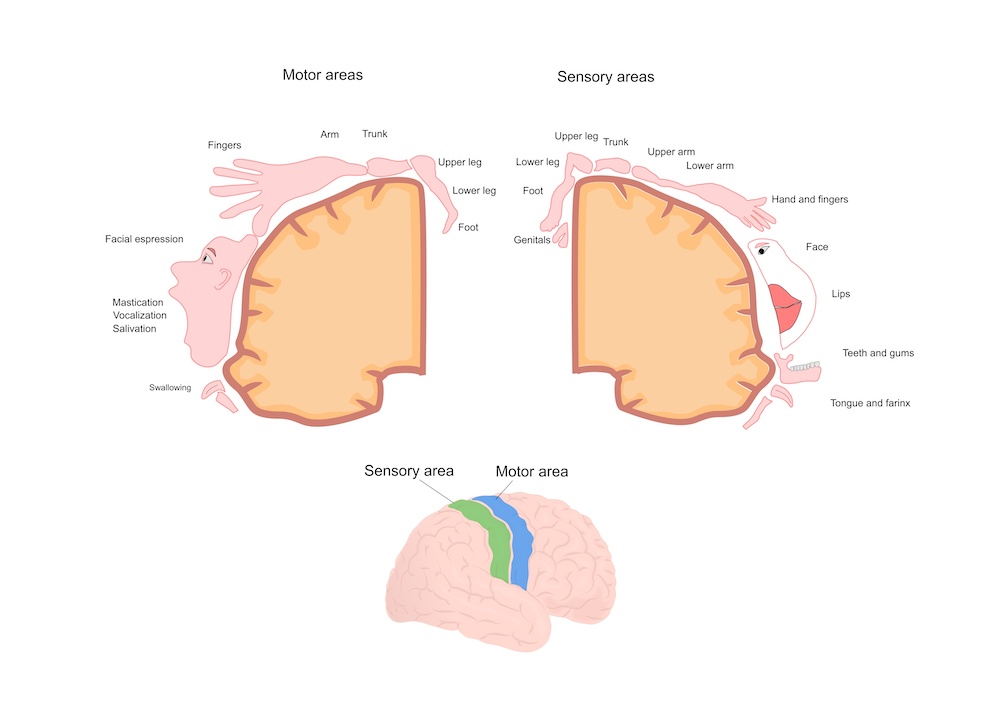
The sensation of touch is mapped onto the somatosensory cortex of the brain. More brain area is used for parts of the body that require fine sensation, like fingers and lips.
Johansen: Yes, it was an exciting time. I was able to entertain many different ideas and gain real world experience in different types of academic environments. While I was working in the bipolar disorder lab, I also started working in Linda’s lab, which really got me hooked on neuroscience. I began to think, “I want to work with patients, but not as a clinical psychologist”. I decided that medical school might be a good option, but I had not earned enough credits in natural science courses such as chemistry and physics, which were required for medical school entrance. I decided to graduate first and then work in a neuroscience lab while studying those subjects properly. So Linda introduced me to Professor Howard Fields at the University of California, San Francisco (UCSF), and I moved to San Francisco to work as a lab manager in his lab.
Brain research fascinated me as I worked and learned
Takeuchi: When you say “laboratory manager,” you mean that your job was to support the smooth running of research by, for example, purchasing the chemicals and equipment necessary for experiments, right?
Johansen: Yes, that was part of the job, but I was ambitious and Howard was an encouraging boss so I ended up learning many laboratory techniques and conducting my own studies. For about five years, while working as a lab manager, I took all the courses required for medical school. It was an exhilarating time and I learned a great deal about neuroscience, both in the lab and in the classroom. Looking back now, it was a period of time that paved the way for my ultimate career path.
Takeuchi: That would have been a busy but very intense time to work and learn. What kind of research was going on in Professor Howard Fields’ lab?
Johansen: His lab was studying “pain,” specifically how pain prediction works on the actual pain circuits in the brain.
Takeuchi: I think I understand, but I’m not sure. What are you referring to specifically?
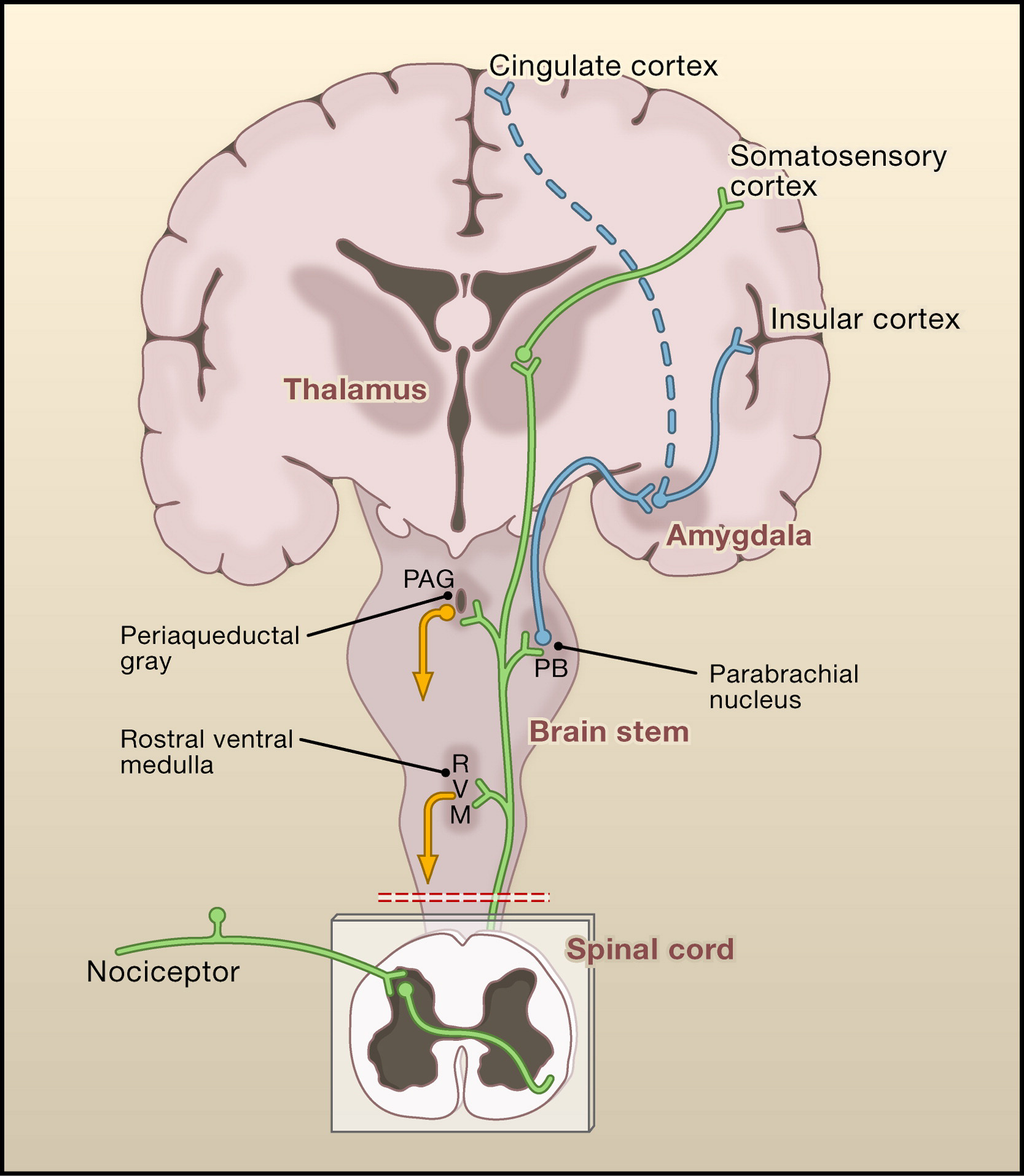
The pain processing pathway. pain perception relies on ascending neural pathways from the spinal cord to the brain, and descending pathways from the brain to the spinal cord. Pain perception can be modulated naturally and with drugs by activating different parts of the circuits. In the interview, Dr Johansen is referring to the descending pathway in the brain stem medulla (RVM), represented here by an orange arrow. In that part of the brain stem there are “on” cells and “off” cells. In natural stress-induced analgesia, opioids activate the “off” cells and suppress the “on” cells, which reduced pain sensation. Image: Pharmacology Res & Perspec, Volume: 9, Issue: 3, First published: 06 June 2021, DOI: (10.1002/prp2.789)
Johansen: Let us say you are on the battlefield, in a dangerous situation where you are getting shot at by the enemy, and you are experiencing stress like you have never experienced it before. Unfortunately, you are hit by a bullet, but in that moment you don’t feel any pain. However, when you leave the battlefield, you begin to feel extreme and intense discomfort. This phenomenon has been reported repeatedly by soldiers in combat or even by car accident victims. This also occurs when we anticipate that something bad is going to happen. This type of analgesia is due to a specific mechanism in the brain that is engaged during conditions of stress, fear, and trauma and reduces pain processing to help us survive. The same endogenous analgesia system is engaged when we take pain killing drugs like morphine. Howard’s lab discovered this analgesia circuit in the brain and his lab was generally focused on researching pain mechanisms.
Takeuchi: So the brain is not only passively processing input from the outside, but it’s also anticipating pain and altering the amount of incoming “pain information”? But how do you actually study that? You must need to examine it as a physiological phenomenon in the brain, not just research based on reports.
Johansen: We used rodents to study the specific neural circuit which does this. It’s in the brainstem and sends projections to the spinal cord to inhibit incoming pain information. We would insert thin electrodes into the brainstem and record the electrical signals from cells there while a mild noxious stimulus was applied to the tail of rats. There were different types of cells there, some called On-cells that were excited by noxious stimuli and others called Off-cells that were inhibited.
Takeuchi: I see. How does that connect to pain sensitivity?
Johansen: Pain sensitivity can be measured by observing On-/Off-cell responses to pain. For example, if rats are given an analgesic drug like morphine, the activity of Off-cells increases and On-cell activity decreases, and animals respond less to painful stimuli. This system is what is recruited during stress and fear. When I first observed this phenomenon, I thought it was truly amazing. The experimental process was a bit like fishing, we would insert our electrodes and the electrical activity of cells was converted to sound. So we could hear cells as we got closer to them and then try to catch them. So I could hear the sound of these cells and see how their activity was reflected in the behavior of the rat. I was fascinated by seeing, in real time, how the dynamic activity of the nervous system controls animal behavior.
Takeuchi: For researchers in life-science fields, not limited to brain science, the experience of actually seeing the microscopic events that form life, which are usually invisible to the naked eye, through experiments must evoke a great deal of emotion. Many scientists tell us how beautiful and majestic this experience is.
The turning point was the study of pain
Johansen: In my case, I was impressed by the way things that could not be explained by psychological theories alone, were revealed in the biology of the nervous system right before my eyes, and ears. At that time, Howard’s lab was evolving from pain research and moving into the study of addiction and motivated behavior. He became the director of the Pain and Addiction Research Center at UCSF, where he assembled a large group of world renowned researchers, including David Julius, who later won the Nobel Prize in Biology and Medicine (awarded in 2021), Roger Nicoll, who did seminal work on synaptic mechanisms of learning and memory and Allison Doupe, a leading research on songbird learning and human speech. So you had all of these fantastic scientists from disparate research areas gathered together to try to understand a new field that they did not work in. There were weekly meetings where everyone read and discussed papers and tried to identify key issues and problems in the field and ascertain the most important, unanswered questions. For a young person like myself, it was incredibly exciting!
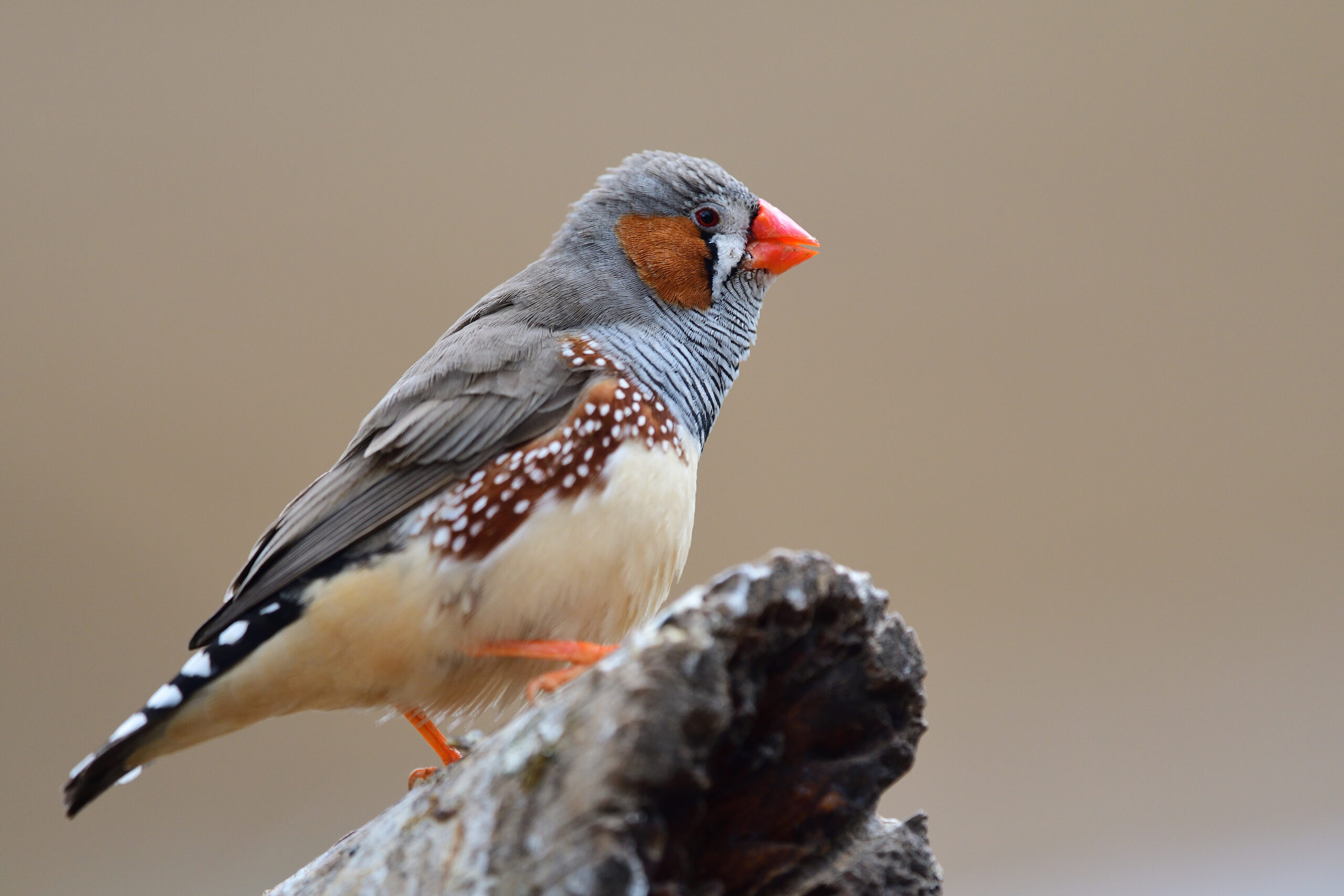
Like human language, zebra finch song is learned during a critical period when male birds are young. The brain circuitry for this behavior has been studied as a model for how people learn and produce language.
Takeuchi: So you were among the neuroscience superstars of this day!
Johansen: I was really lucky. I learned a lot, especially about how to assimilate existing knowledge to identify what we know, and then figure out what the most important new questions are; how to chart a new path essentially. While working as a lab manager in Howard’s lab, I followed this process to think about what unanswered questions remained in pain research.
Takeuchi: What was the specific unresolved issue/question you were working on?
Johansen: I felt that the underlying intellectual framework that guided the field needed to be reframed before real headway into understanding its higher order brain mechanisms could be made. The key guiding question remainedーand I think this is still an unsolved problemーwhat is pain for? Researchers at the time focused on pain as a “sense” like touch. How is the localization and intensity of pain perceived, and how are different types of pain transmitted, such as thermal pain or mechanical pain? There was little progress on how pain changes the behavior of living organisms. The reason we have pain is so that we can escape from what’s causing it at the moment and learn not to put ourselves in situations which cause pain in the future. I decided to study this this question. This resulted in a number of impactful publications from Howard’s lab and has served as the basis for much of what I am doing today.
Takeuchi: Gradually, your interest shifted from medicine to basic research.
Johansen: I was going to start preparing for the medical school entrance exam just as I was advancing my research on pain, but by that time I had developed a strong interest in neuroscience research. After a considerable detour, I decided it was finally time to figure out which path I wanted to take and what I wanted to do with my life.
Takeuchi: Wow, a turning point. What path did you choose?
Johansen: (Laughing) Yes, as you may be able to tell from this conversation, my interests shifted. I decided to go into neuroscience. I entered a PhD program at the University of California, Los Angeles in 2003 and, at the age of 34, I received my Ph.D. in the lab of Dr. Tad Blair, studying how unpleasant experiences trigger fear memories. I then moved to a postdoc position at New York University working with Dr. Joseph LeDoux examining brain mechanisms of emotional learning and memory. After four years of post-doctoral work at NYU, I moved to Japan to start my own lab at RIKEN.
You made it to the end of part 1!!! stay tuned for part 2, coming soon … ? ? (You can read the conversation in Japanese here)

